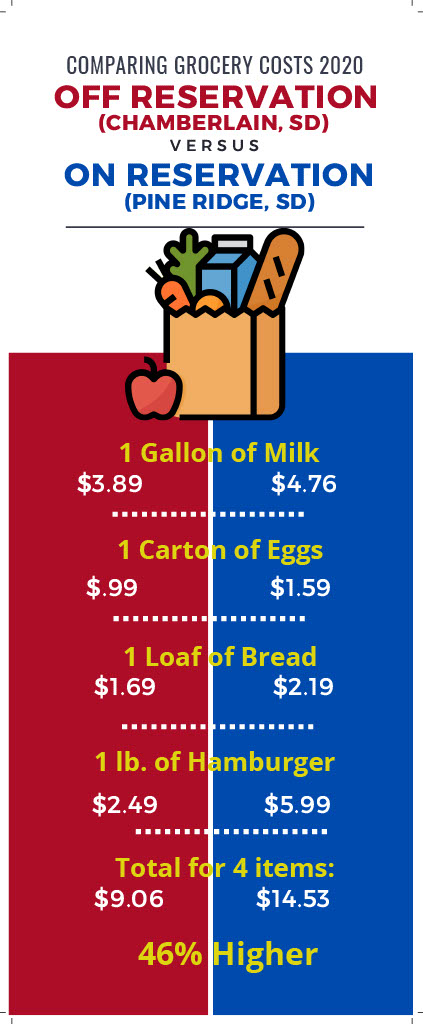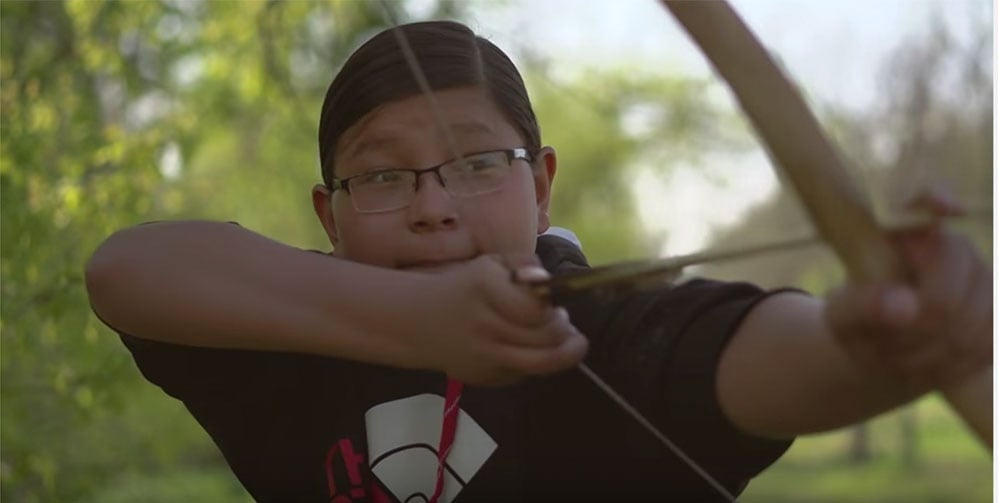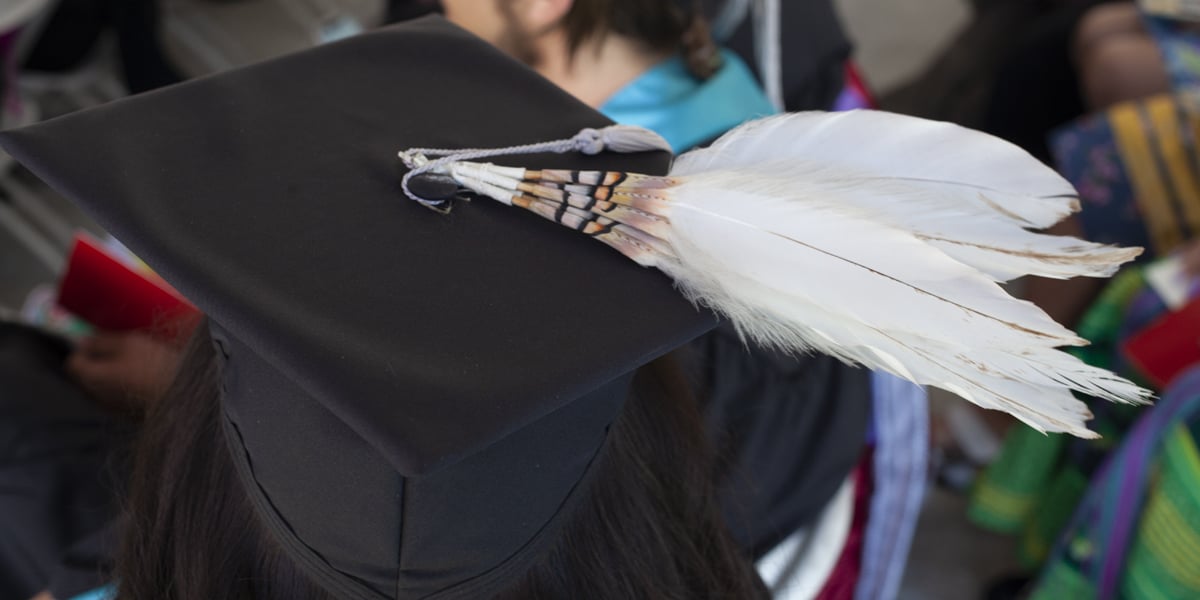Jul 22, 2020 | Native Hope
Did you know 1 in 4 Native Americans experience food insecurity? It’s true. Unfortunately, hunger and malnutrition are very common on America’s reservations.
Statistically, “households of Native American families are 400 percent more likely than other U.S. households to report not having enough to eat, largely as a result of living in remote, isolated locations where food supplies and jobs are scarce.”
Due to COVID-19, food insecurity has only increased. Tribal community members have faced mandatory 72-hour lockdowns and stiff curfews. These restrictions have decreased the already limited mobility of community members. Their reservations are located 20-45 miles from “off-reservation” communities with grocery and big box stores. Many people are forced to shop at an on-reservation grocery stores that naturally have higher prices.
We price checked four staple items at a local off-reservation store and at an on-reservation store in Pine Ridge.
A side-by-side comparison of these items confirmed that it costs at least 40 percent more to shop within a tribal community. This is not to discourage supporting reservation stores, but our point is to show that providing a couple meals once a week to families in need does provide necessary relief, both financially and physically.
Another important comparison to illustrate is that at least 60 reservations are “food deserts,” lacking access to affordable fresh fruits and vegetables. The U.S. government provides commodities to reservations; however, many of the commodities are high in sodium, high in carbohydrates, and high in fat—a poor combination for Native Americans who suffer from high rates of diabetes, heart disease, and high blood pressure.
Elders and children feel the most strain
American households are largely single-family dwellings, housing less than 3 family members. In contrast, South Dakota documented 16,000 Native American children who identified as “high poverty” (2014-2018)—many of them living in multi-generational homes with upwards of 25 family members. In these homes, typically, an uncí (grandmother) cares for all. “What people need to envision is that it is not uncommon for 25 people to live together, [and] of those, 12 are usually children,” explains Tiny DeCory, BEAR program director. “Grandma cooks out of a pot. She cooks spaghetti, chili, soup, whatever she can. When that pot runs dry, kids and grandma go without.”
Many of these children and grandmas rely on free and reduced meals from schools and after-school programs, which are largely closed at this point. Thus, Native Hope views its contributions toward their hunger as necessary. “If you cut yourself, do you put on a “band-aid” to stop the bleeding? Or do you put on a tourniquet…” Tiny frankly replied when asked if providing meals to families is just a quick-fix for a much larger issue.
Native Hope and our partnerships work to help ease the burden
Lakota tradition is to give to others when they are in need—even when it means to go without. In the spirit of the Lakota Way, Native Hope feels that delivering what we can in this time of need will help ease the fear and despair presented by COVID-19. With our tribal community partners, fellows, and supporters, it is our hope to continue providing members of tribal communities with love and support.



COMMENTS